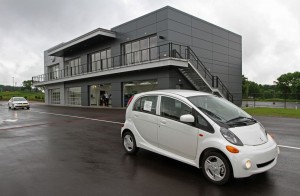 Ford just announced in its annual Sustainability Report that it has reduced the amount of energy required to produce each vehicle in its manufacturing facilities by 22 percent in the last six years. The company also announced plans to reduce usage another 25 percent on a per-vehicle basis by 2016. Decreased energy consumption during vehicle manufacturing is just one highlight of Ford’s 13th annual Sustainability Report. The report – “Blueprint for Sustainability: Accelerating Ahead” – is a comprehensive showcase of the company’s efforts to tackle a myriad of sustainability challenges in a rapidly changing world. Other successful initiatives featured include reductions in water use, waste-to-landfill and CO2 emissions as well as improvements in vehicle fuel economy and safety. “Sustainability has moved from the periphery to the center of our strategy for succeeding in the marketplace and helping to address global challenges,” said Robert Brown, vice president, Sustainability, Environment and Safety Engineering.
Ford just announced in its annual Sustainability Report that it has reduced the amount of energy required to produce each vehicle in its manufacturing facilities by 22 percent in the last six years. The company also announced plans to reduce usage another 25 percent on a per-vehicle basis by 2016. Decreased energy consumption during vehicle manufacturing is just one highlight of Ford’s 13th annual Sustainability Report. The report – “Blueprint for Sustainability: Accelerating Ahead” – is a comprehensive showcase of the company’s efforts to tackle a myriad of sustainability challenges in a rapidly changing world. Other successful initiatives featured include reductions in water use, waste-to-landfill and CO2 emissions as well as improvements in vehicle fuel economy and safety. “Sustainability has moved from the periphery to the center of our strategy for succeeding in the marketplace and helping to address global challenges,” said Robert Brown, vice president, Sustainability, Environment and Safety Engineering.
“Our sustainability report is far from a bunch of tables and charts,” said John Viera, global director, Sustainability and Vehicle Environmental Matters. “Anyone who spends any amount of time with it will truly get a sense of just how committed Ford is to supporting positive change and reducing the environmental impact of its products and facilities.”Consider the drop in energy consumption: The amount of electricity used to produce each vehicle in Ford’s manufacturing facilities has been reduced by about 800 kilowatt-hours – from 3,576 kwh in 2006 to 2,778 kwh in 2011. By comparison, average households in states like California, New York, Illinois and Michigan use between 562 kwh and 799 kwh monthly.
Ford’s progress has been achieved by investing in energy-saving practices and equipment. At Michigan Assembly Plant in Wayne, Mich., for example, the company uses a new “three-wet” paint application that reduces electricity use along with CO2 and Volatile Organic Compound (VOC) emissions. At the same plant, a new 500-kilowatt solar panel system has been installed to generate renewable energy for production of Ford vehicles like Focus and Focus Electric. Thanks to such efforts already in place and Ford’s commitment to making further progress, the company projects a continued drop in energy consumption – 25 percent between 2011 and 2016.







